Kurt Vonnegut, Jr. (November 11, 1922 – April 11, 2007) was an American writer. His works such as Cat's Cradle (1963), Slaughterhouse-Five (1969), and Breakfast of Champions (1973) blend satire, gallows humor, and science fiction. As a citizen he was a lifelong supporter of the American Civil Liberties Union and a critical pacifist intellectual. He was known for his humanist beliefs and was honorary president of the American Humanist Association.
Jeff Koons


Arthur Coleman Danto (January 1, 1924 – October 25, 2013) was an American art critic and philosopher. He is best known for having been influential, long-time art critic for The Nation and for his work in philosophical aesthetics and philosophy of history, though he contributed significantly to a number of fields, including the philosophy of action. His interests included thought, feeling, philosophy of art, theories of representation, philosophical psychology, Hegel's aesthetics, and the philosophers, Friedrich Nietzsche and Arthur Schopenhauer.
Joseph Beuys 12 May 1921 – 23 January 1986) was a German Fluxus, happening and performance artist as well as a sculptor, installation artist, graphic artist, art theorist and pedagogue of art
His extensive work is grounded in concepts of humanism, social philosophy and anthroposophy; it culminates in his "extended definition of art" and the idea of social sculpture as a gesamtkunstwerk, for which he claimed a creative, participatory role in shaping society and politics. His career was characterized by passionate, even acrimonious public debate, but he is now regarded as one of the most influential artists of the second half of the 20th century.
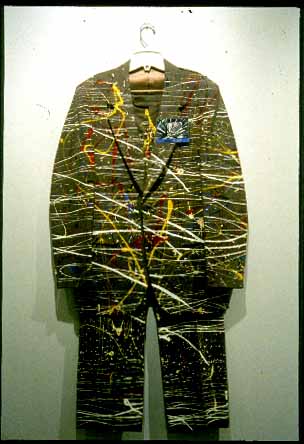
John Thompson 1924-2011
orn in Oldham and essentially self-taught, John Thompson paints groups of figures, cloth capped and anonymous, that loom, loiter, parade and parley in that obscure way that baffles children.
He is now compared to other, better known northern artists such as Theodore Major, Harold Riley and the man himself, L. S. Lowry. This recognition has taken time to develop, but in the last 7 years of his life John enjoyed enormouse commercial success.
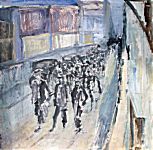
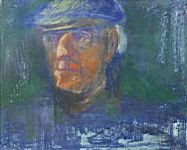
Murano Glass
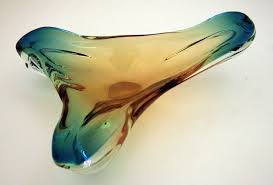

Kit Galloway And Sherry Raboniwitz


Inhotim
The Centro de Arte Contemporânea Inhotim is a museum and contemporary art museum located in Brumadinho in southeast Brazil, founded by former mining magnate Bernardo Paz.
Beginning in the 1980s, Paz converted a 3,000-acre ranch into a sprawling botatical garden designed by the late landscape artist Roberto Burle Marx, a friend of Paz′s. Inhotim, now at 5,000 acres, is vast enough to require 1,000 employees. The garden, which boasts two dozen art “pavilions”, opened to the public in 2006. In 2011, it attracted nearly 250,000 visitors from all over the world. The pavilions include more than 500 works by noted Brazilian and international artists, such as Hélio Oiticica, Yayoi Kusama, Anish Kapoor, Thomas Hirschhorn, Matthew Barney, Doug Aitken, Dominique Gonzalez-Foerster, Steve McQueen, Cildo Meireles and Vik Muniz One pavilion is devoted to one of Paz′s ex-wives, the Brazilian artist Adriana Varejão

Marguerite "Peggy" Guggenheim (August 26, 1898 – December 23, 1979) was an American art collector, bohemian and socialite. Born to a wealthy New York City family, she was the daughter of Benjamin Guggenheim, who went down with the Titanic in 1912, and the niece of Solomon R. Guggenheim, who would establish the Solomon R. Guggenheim Foundation. Peggy Guggenheim created a noted art collection in Europe and America primarily between 1938 and 1946. She exhibited this collection as she built it and, in 1949, settled in Venice, where she lived and exhibited her collection for the rest of her life.

Keith Allen Haring (May 4, 1958 – February 16, 1990) was an artist and social activist whose work responded to the New York City street culture of the 1980s by expressing concepts of birth, death and war. Haring's imagery has become a widely recognized visual language of the 20th century.


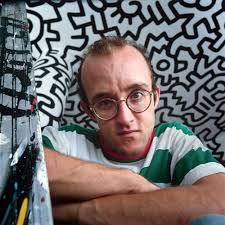
William Melvin "Bill" Hicks (December 16, 1961 – February 26, 1994) was an American stand-up comedian, social critic, satirist, and musician. His material, encompassing a wide range of social issues as well as religion, politics, and philosophy, was controversial, and often steeped in dark comedy. He criticized consumerism, superficiality, mediocrity, and banality within the media and popular culture, which he characterized as oppressive tools of the ruling class that "keep people stupid and apathetic".
At age 16, while still in high school, he began performing at the Comedy Workshop in Houston, Texas. During the 1980s he toured the United States extensively and made a number of high-profile television appearances; but it was in the UK that he amassed a significant fan base, filling large venues during his 1991 tour. He also achieved a modicum of recognition as a guitarist and songwriter.
Bill Hicks Quotes
• I don't like anything in the mainstream and they don't like me.
• I loved when Bush came out and said, "We are losing the war against drugs." You know what that implies? There's a war being fought, and the people on drugs are winning it.
• Isn’t humanity neat?’ bulls***. We’re a virus with shoes, okay? That’s all we are.
• I was in a cab in New York. The cab had a sign, "Please do not smoke, Christ is our unseen guest." This guy was reaching. I figure, if he could overcome being nailed to a cross, I don't think a Marlboro Light's gonna faze him that much.
• I was over in Australia during Easter, which was really interesting. You know, they celebrate Easter the exact same way we do, commemorating the death and resurrection of Jesus by telling our children that a giant bunny rabbit … left chocolate eggs in the night.
• You ever notice that everyone who believes in creationism looks really unevolved? Eyes real close together, big furry hands and feet. "I believe God created me in one day." Yeah, looks like he rushed it.
• I've been on what I call my UFO Tour, which means, like UFOs, I too have been appearing in small southern towns in front of a handful of hillbillies lately. I've been doubting my own existence.
• This idea of "I'm offended". Well I've got news for you. I'm offended by a lot of things too. Where do I send my list? Life is offensive. You know what I mean? Just get in touch with your outer adult. And grow up. And move on. Reasonable people don't write letters because... A: They have lives and B, they understand it's just TV. C: If they see something they don't like, something they do like might be on later. I've seen many comics I've hated. I've seen many shows that have offended me. I've never written a letter. I just go about my life.
Brian Peter George St. John le Baptiste de la Salle Eno, RDI (born 15 May 1948 and originally christened Brian Peter George Eno), professionally known as Brian Eno or simply as Eno, is an English musician, composer, record producer, singer, and visual artist, known as one of the principal innovators of ambient music
Eno was a student of Roy Ascot on his Groundcourse at Ipswich Civic College. Then he studied at Colchester Institute art school in Essex, England, taking inspiration from minimalist painting. During his time on the art course at the Institute, he also gained experience in playing and making music through teaching sessions held in the adjacent music school. He joined the band Roxy Music as synthesiser player in the early 1970s. Roxy Music's success in the glam rock scene came quickly, but Eno soon tired of touring and of conflicts with lead singer Bryan Ferry.
Eno's solo music has explored more experimental musical styles and ambient music. It has also been immensely influential, pioneering ambient and generative music, innovating production techniques, and emphasising "theory over practice". He also introduced the concept of chance music to popular audiences, partially through collaborations with other musicians. Eno has also worked as an influential music and album producer. By the end of the 1970s, Eno had worked with David Bowie on the seminal "Berlin Trilogy" and helped popularise the American band Devo and the punk-influenced "No Wave" genre. He produced and performed on three albums by Talking Heads, including Remain in Light (1980), and produced seven albums for U2, including The Joshua Tree (1987). Eno has also worked on records by James, Laurie Anderson, Coldplay, Depeche Mode, Paul Simon, Grace Jones, James Blake and Slowdive among others.
Eno pursues multimedia ventures in parallel to his music career, including art installations, a regular column on society and innovation in Prospect magazine, and "Oblique Strategies" (written with Peter Schmidt), a deck of cards in which cryptic remarks or random insights are intended to resolve dilemmas. Eno continues to collaborate with other musicians, produce records, release his own music, and write.
Yves Klein (28 April 1928 – 6 June 1962) was a French artist considered an important figure in post-war European art. He is the leading member of the French artistic movement of Nouveau réalisme founded in 1960 by art critic Pierre Restany. Klein was a pioneer in the development of Performance art, and is seen as an inspiration to and as a forerunner of Minimal art, as well as Pop art.

VIRGINIA NICHOLSON was born in Newcastle-upon-Tyne in 1955. Her father was the art historian and writer Quentin Bell, acclaimed for his biography of his aunt Virginia Woolf. Her mother Anne Olivier Bell edited the five volumes of Virginia Woolf’s Diaries.
Bell, acclaimed for his biography of his aunt Virginia Woolf. Her mother Anne Olivier Bell edited the five volumes of Virginia Woolf’s Diaries.
Virginia grew up in the suburbs of Leeds, but the family moved to Sussex when she was in her teens. She was educated at Lewes Priory School (Comprehensive). After a gap year working in Paris she went on to study English Literature at King’s College Cambridge.
In 1978 Virginia spent a year living in Italy (Venice), where she taught English and learnt Italian. Returning to the UK in 1979 she re-visited her northern childhood while working for Yorkshire Television as a researcher for children’s programmes. In 1983 she joined the Documentary department of BBC Television.
 In 1988 Virginia married screenwriter and author William Nicholson. Following the birth of their son in 1989, Virginia left the BBC and shortly afterwards the Nicholsons moved to East Sussex. Two daughters were born in 1991 and 1993.
In 1988 Virginia married screenwriter and author William Nicholson. Following the birth of their son in 1989, Virginia left the BBC and shortly afterwards the Nicholsons moved to East Sussex. Two daughters were born in 1991 and 1993.
Living in Sussex, Virginia became increasingly involved with the Trust that administered Charleston, home of her grandmother the painter Vanessa Bell, in due course becoming its Deputy Chairman. Her first book (co-authored with her father) CHARLESTON: A Bloomsbury House and Garden was published by Frances Lincoln in 1997. In 1999/2000 she made a ten-city tour of the USA to promote the book and Charleston itself.
In November 2002 Viking published AMONG THE BOHEMIANS - Experiments in Living 1900-1939 to critical acclaim. Its publication by Morrow, USA in February 2004 was followed by a sell-out lecture and publicity tour round five American cities.
SINGLED OUT - How Two Million Women Survived Without Men After the First World War, was published in August 2007. In this book Virginia Nicholson has set out to tell the stories of a remarkable generation of women forced by a historic tragedy to reinvent their lives. Singled Out received a spate of enthusiastic reviews which applauded it as a pioneering and humane work of social history. Virginia’s fourth book MILLIONS LIKE US – Women’s Lives in War and Peace 1939-1949 was published in May 2011. The work on all these books was combined with her continuing commitment to the Charleston Trust.
Alan Kaprow
Allan Kaprow (August 23, 1927 – April 5, 2006) was an American painter, assemblagist and a pioneer in establishing the concepts of performance art. He helped to develop the "Environment" and "Happening" in the late 1950s and 1960s, as well as their theory. His Happenings - some 200 of them - evolved over the years. Eventually Kaprow shifted his practice into what he called "Activities", intimately scaled pieces for one or several players, devoted to the study of normal human activity in a way congruent to ordinary life. Fluxus, Performance art, and Installation art was, in turn, influenced by his work.


Thomas Kennerly "Tom" Wolfe, Jr. (born March 2, 1931) is an American author and journalist, best known for his association and influence over the New Journalism literary movement in which literary techniques are used in objective, even-handed journalism. Beginning his career as a reporter he soon became one of the most culturally significant figures of the sixties after the publication of books such as The Electric Kool-Aid Acid Test, a highly experimental account of Ken Kesey and the Merry Pranksters, and his collections of articles and essays, Radical Chic & Mau-Mauing the Flak Catcher and The Kandy-Kolored Tangerine-Flake Streamline Baby. His first novel entitled The Bonfire of the Vanities, released in 1987, was met with critical acclaim and was a great commercial success.
He is also known, in recent years, for his spats and public disputes with other writers, including John Updike, Norman Mailer, and John Irving.
Sir Lawrence Alma-Tadema, OM, RA (8 January 1836 – 25 June 1912) was a Dutch painter of special British denizenship.
Born in Dronrijp, the Netherlands, and trained at the Royal Academy of Antwerp, Belgium, he settled in England in 1870 and spent the rest of his life there. A classical-subject painter, he became famous for his depictions of the luxury and decadence of the Roman Empire, with languorous figures set in fabulous marbled interiors or against a backdrop of dazzling blue Mediterranean Sea and sky.
Though admired during his lifetime for his draftsmanship and depictions of Classical antiquity, his work fell into disrepute after his death, and only since the 1960s has it been re-evaluated for its importance within nineteenth-century English art.
Allen Jones RA (born 1 September 1937) is a British pop artist, best known for his sculptures. He lives and works in London.
Jones was born in Southampton and from 1955 to 1961 studied at Horny College of Art. In 1960 he was expelled from the Royal College of Art, where his contemporaries were R. B. Kitaj, Peter Phillips, David Hockney and Derek Boshier. From 1961 to 1963 Jones taught at Croydon College of Art.
Jones' exhibition of erotic sculptures, such as the set Chair, Table and Hat Stand (1969), are studies in forniphilia, which turn women into items of human furniture. Much of his work draws on the imagery of rubber fetishism and BDSM.


Jeff Koons


Arthur Coleman Danto (January 1, 1924 – October 25, 2013) was an American art critic and philosopher. He is best known for having been influential, long-time art critic for The Nation and for his work in philosophical aesthetics and philosophy of history, though he contributed significantly to a number of fields, including the philosophy of action. His interests included thought, feeling, philosophy of art, theories of representation, philosophical psychology, Hegel's aesthetics, and the philosophers, Friedrich Nietzsche and Arthur Schopenhauer.
Joseph Beuys 12 May 1921 – 23 January 1986) was a German Fluxus, happening and performance artist as well as a sculptor, installation artist, graphic artist, art theorist and pedagogue of art
His extensive work is grounded in concepts of humanism, social philosophy and anthroposophy; it culminates in his "extended definition of art" and the idea of social sculpture as a gesamtkunstwerk, for which he claimed a creative, participatory role in shaping society and politics. His career was characterized by passionate, even acrimonious public debate, but he is now regarded as one of the most influential artists of the second half of the 20th century.

John Thompson 1924-2011
orn in Oldham and essentially self-taught, John Thompson paints groups of figures, cloth capped and anonymous, that loom, loiter, parade and parley in that obscure way that baffles children.
He is now compared to other, better known northern artists such as Theodore Major, Harold Riley and the man himself, L. S. Lowry. This recognition has taken time to develop, but in the last 7 years of his life John enjoyed enormouse commercial success.


Kit Galloway And Sherry Raboniwitz


Inhotim
The Centro de Arte Contemporânea Inhotim is a museum and contemporary art museum located in Brumadinho in southeast Brazil, founded by former mining magnate Bernardo Paz.
Beginning in the 1980s, Paz converted a 3,000-acre ranch into a sprawling botatical garden designed by the late landscape artist Roberto Burle Marx, a friend of Paz′s. Inhotim, now at 5,000 acres, is vast enough to require 1,000 employees. The garden, which boasts two dozen art “pavilions”, opened to the public in 2006. In 2011, it attracted nearly 250,000 visitors from all over the world. The pavilions include more than 500 works by noted Brazilian and international artists, such as Hélio Oiticica, Yayoi Kusama, Anish Kapoor, Thomas Hirschhorn, Matthew Barney, Doug Aitken, Dominique Gonzalez-Foerster, Steve McQueen, Cildo Meireles and Vik Muniz One pavilion is devoted to one of Paz′s ex-wives, the Brazilian artist Adriana Varejão

Marguerite "Peggy" Guggenheim (August 26, 1898 – December 23, 1979) was an American art collector, bohemian and socialite. Born to a wealthy New York City family, she was the daughter of Benjamin Guggenheim, who went down with the Titanic in 1912, and the niece of Solomon R. Guggenheim, who would establish the Solomon R. Guggenheim Foundation. Peggy Guggenheim created a noted art collection in Europe and America primarily between 1938 and 1946. She exhibited this collection as she built it and, in 1949, settled in Venice, where she lived and exhibited her collection for the rest of her life.

Keith Allen Haring (May 4, 1958 – February 16, 1990) was an artist and social activist whose work responded to the New York City street culture of the 1980s by expressing concepts of birth, death and war. Haring's imagery has become a widely recognized visual language of the 20th century.


William Melvin "Bill" Hicks (December 16, 1961 – February 26, 1994) was an American stand-up comedian, social critic, satirist, and musician. His material, encompassing a wide range of social issues as well as religion, politics, and philosophy, was controversial, and often steeped in dark comedy. He criticized consumerism, superficiality, mediocrity, and banality within the media and popular culture, which he characterized as oppressive tools of the ruling class that "keep people stupid and apathetic".
At age 16, while still in high school, he began performing at the Comedy Workshop in Houston, Texas. During the 1980s he toured the United States extensively and made a number of high-profile television appearances; but it was in the UK that he amassed a significant fan base, filling large venues during his 1991 tour. He also achieved a modicum of recognition as a guitarist and songwriter.
Bill Hicks Quotes
• I need my sleep. I need about eight hours a day, and about ten at night.
- You know how in many parts of our troubled world they are yelling 'revolution! revolution!' In Tennessee they are yelling 'evolution . . . we want our thumbs!'
• I don't like anything in the mainstream and they don't like me.
• I loved when Bush came out and said, "We are losing the war against drugs." You know what that implies? There's a war being fought, and the people on drugs are winning it.
• Isn’t humanity neat?’ bulls***. We’re a virus with shoes, okay? That’s all we are.
• I was in a cab in New York. The cab had a sign, "Please do not smoke, Christ is our unseen guest." This guy was reaching. I figure, if he could overcome being nailed to a cross, I don't think a Marlboro Light's gonna faze him that much.
• I was over in Australia during Easter, which was really interesting. You know, they celebrate Easter the exact same way we do, commemorating the death and resurrection of Jesus by telling our children that a giant bunny rabbit … left chocolate eggs in the night.
• You ever notice that everyone who believes in creationism looks really unevolved? Eyes real close together, big furry hands and feet. "I believe God created me in one day." Yeah, looks like he rushed it.
• I've been on what I call my UFO Tour, which means, like UFOs, I too have been appearing in small southern towns in front of a handful of hillbillies lately. I've been doubting my own existence.
• This idea of "I'm offended". Well I've got news for you. I'm offended by a lot of things too. Where do I send my list? Life is offensive. You know what I mean? Just get in touch with your outer adult. And grow up. And move on. Reasonable people don't write letters because... A: They have lives and B, they understand it's just TV. C: If they see something they don't like, something they do like might be on later. I've seen many comics I've hated. I've seen many shows that have offended me. I've never written a letter. I just go about my life.
Brian Peter George St. John le Baptiste de la Salle Eno, RDI (born 15 May 1948 and originally christened Brian Peter George Eno), professionally known as Brian Eno or simply as Eno, is an English musician, composer, record producer, singer, and visual artist, known as one of the principal innovators of ambient music
Eno was a student of Roy Ascot on his Groundcourse at Ipswich Civic College. Then he studied at Colchester Institute art school in Essex, England, taking inspiration from minimalist painting. During his time on the art course at the Institute, he also gained experience in playing and making music through teaching sessions held in the adjacent music school. He joined the band Roxy Music as synthesiser player in the early 1970s. Roxy Music's success in the glam rock scene came quickly, but Eno soon tired of touring and of conflicts with lead singer Bryan Ferry.
Eno's solo music has explored more experimental musical styles and ambient music. It has also been immensely influential, pioneering ambient and generative music, innovating production techniques, and emphasising "theory over practice". He also introduced the concept of chance music to popular audiences, partially through collaborations with other musicians. Eno has also worked as an influential music and album producer. By the end of the 1970s, Eno had worked with David Bowie on the seminal "Berlin Trilogy" and helped popularise the American band Devo and the punk-influenced "No Wave" genre. He produced and performed on three albums by Talking Heads, including Remain in Light (1980), and produced seven albums for U2, including The Joshua Tree (1987). Eno has also worked on records by James, Laurie Anderson, Coldplay, Depeche Mode, Paul Simon, Grace Jones, James Blake and Slowdive among others.
Eno pursues multimedia ventures in parallel to his music career, including art installations, a regular column on society and innovation in Prospect magazine, and "Oblique Strategies" (written with Peter Schmidt), a deck of cards in which cryptic remarks or random insights are intended to resolve dilemmas. Eno continues to collaborate with other musicians, produce records, release his own music, and write.
Yves Klein (28 April 1928 – 6 June 1962) was a French artist considered an important figure in post-war European art. He is the leading member of the French artistic movement of Nouveau réalisme founded in 1960 by art critic Pierre Restany. Klein was a pioneer in the development of Performance art, and is seen as an inspiration to and as a forerunner of Minimal art, as well as Pop art.

VIRGINIA NICHOLSON was born in Newcastle-upon-Tyne in 1955. Her father was the art historian and writer Quentin
 Bell, acclaimed for his biography of his aunt Virginia Woolf. Her mother Anne Olivier Bell edited the five volumes of Virginia Woolf’s Diaries.
Bell, acclaimed for his biography of his aunt Virginia Woolf. Her mother Anne Olivier Bell edited the five volumes of Virginia Woolf’s Diaries.Virginia grew up in the suburbs of Leeds, but the family moved to Sussex when she was in her teens. She was educated at Lewes Priory School (Comprehensive). After a gap year working in Paris she went on to study English Literature at King’s College Cambridge.
In 1978 Virginia spent a year living in Italy (Venice), where she taught English and learnt Italian. Returning to the UK in 1979 she re-visited her northern childhood while working for Yorkshire Television as a researcher for children’s programmes. In 1983 she joined the Documentary department of BBC Television.
 In 1988 Virginia married screenwriter and author William Nicholson. Following the birth of their son in 1989, Virginia left the BBC and shortly afterwards the Nicholsons moved to East Sussex. Two daughters were born in 1991 and 1993.
In 1988 Virginia married screenwriter and author William Nicholson. Following the birth of their son in 1989, Virginia left the BBC and shortly afterwards the Nicholsons moved to East Sussex. Two daughters were born in 1991 and 1993.Living in Sussex, Virginia became increasingly involved with the Trust that administered Charleston, home of her grandmother the painter Vanessa Bell, in due course becoming its Deputy Chairman. Her first book (co-authored with her father) CHARLESTON: A Bloomsbury House and Garden was published by Frances Lincoln in 1997. In 1999/2000 she made a ten-city tour of the USA to promote the book and Charleston itself.
In November 2002 Viking published AMONG THE BOHEMIANS - Experiments in Living 1900-1939 to critical acclaim. Its publication by Morrow, USA in February 2004 was followed by a sell-out lecture and publicity tour round five American cities.
SINGLED OUT - How Two Million Women Survived Without Men After the First World War, was published in August 2007. In this book Virginia Nicholson has set out to tell the stories of a remarkable generation of women forced by a historic tragedy to reinvent their lives. Singled Out received a spate of enthusiastic reviews which applauded it as a pioneering and humane work of social history. Virginia’s fourth book MILLIONS LIKE US – Women’s Lives in War and Peace 1939-1949 was published in May 2011. The work on all these books was combined with her continuing commitment to the Charleston Trust.
Alan Kaprow
Allan Kaprow (August 23, 1927 – April 5, 2006) was an American painter, assemblagist and a pioneer in establishing the concepts of performance art. He helped to develop the "Environment" and "Happening" in the late 1950s and 1960s, as well as their theory. His Happenings - some 200 of them - evolved over the years. Eventually Kaprow shifted his practice into what he called "Activities", intimately scaled pieces for one or several players, devoted to the study of normal human activity in a way congruent to ordinary life. Fluxus, Performance art, and Installation art was, in turn, influenced by his work.


Thomas Kennerly "Tom" Wolfe, Jr. (born March 2, 1931) is an American author and journalist, best known for his association and influence over the New Journalism literary movement in which literary techniques are used in objective, even-handed journalism. Beginning his career as a reporter he soon became one of the most culturally significant figures of the sixties after the publication of books such as The Electric Kool-Aid Acid Test, a highly experimental account of Ken Kesey and the Merry Pranksters, and his collections of articles and essays, Radical Chic & Mau-Mauing the Flak Catcher and The Kandy-Kolored Tangerine-Flake Streamline Baby. His first novel entitled The Bonfire of the Vanities, released in 1987, was met with critical acclaim and was a great commercial success.
He is also known, in recent years, for his spats and public disputes with other writers, including John Updike, Norman Mailer, and John Irving.
Sir Lawrence Alma-Tadema, OM, RA (8 January 1836 – 25 June 1912) was a Dutch painter of special British denizenship.
Born in Dronrijp, the Netherlands, and trained at the Royal Academy of Antwerp, Belgium, he settled in England in 1870 and spent the rest of his life there. A classical-subject painter, he became famous for his depictions of the luxury and decadence of the Roman Empire, with languorous figures set in fabulous marbled interiors or against a backdrop of dazzling blue Mediterranean Sea and sky.
Though admired during his lifetime for his draftsmanship and depictions of Classical antiquity, his work fell into disrepute after his death, and only since the 1960s has it been re-evaluated for its importance within nineteenth-century English art.
Allen Jones RA (born 1 September 1937) is a British pop artist, best known for his sculptures. He lives and works in London.
Jones was born in Southampton and from 1955 to 1961 studied at Horny College of Art. In 1960 he was expelled from the Royal College of Art, where his contemporaries were R. B. Kitaj, Peter Phillips, David Hockney and Derek Boshier. From 1961 to 1963 Jones taught at Croydon College of Art.
Jones' exhibition of erotic sculptures, such as the set Chair, Table and Hat Stand (1969), are studies in forniphilia, which turn women into items of human furniture. Much of his work draws on the imagery of rubber fetishism and BDSM.

